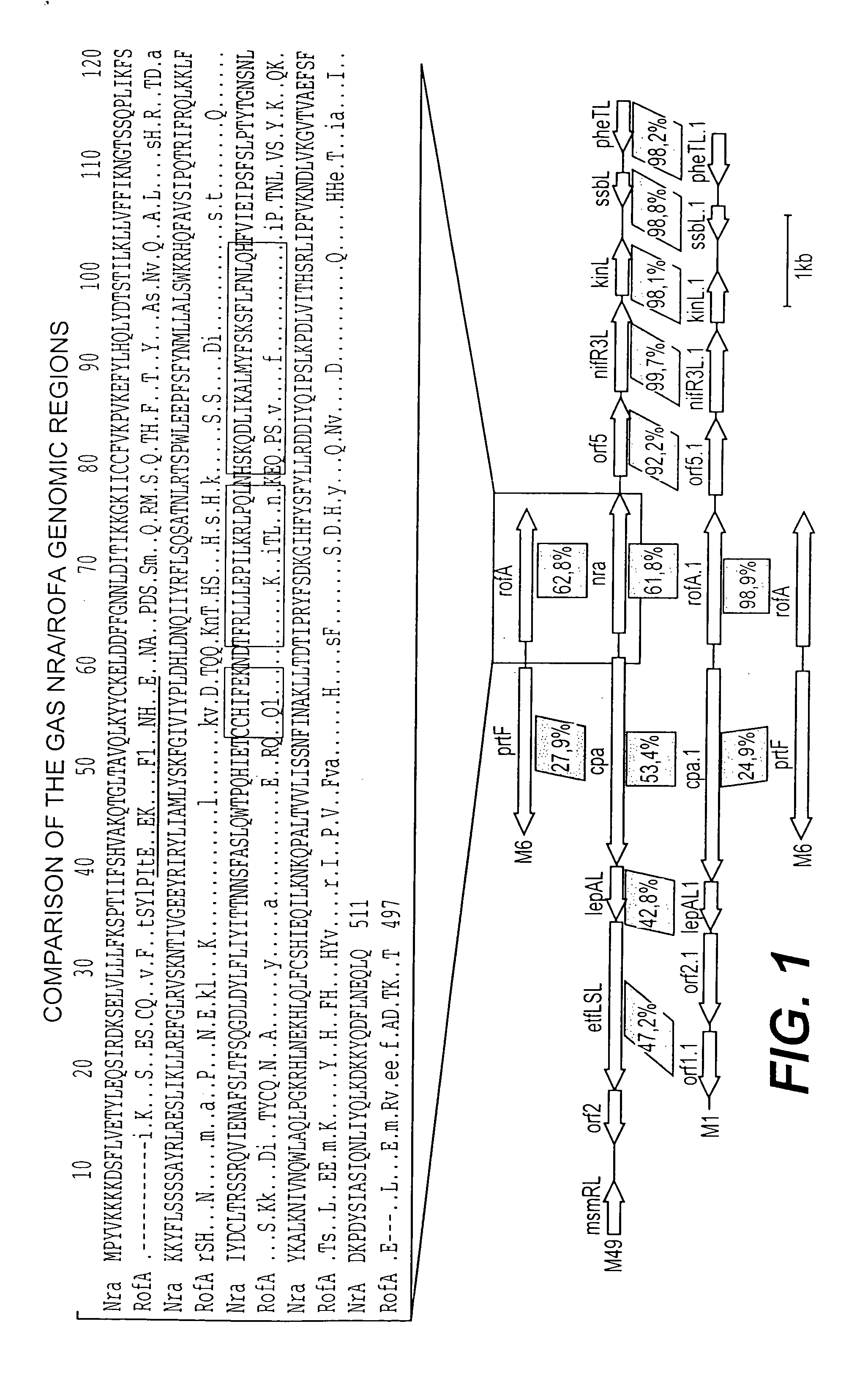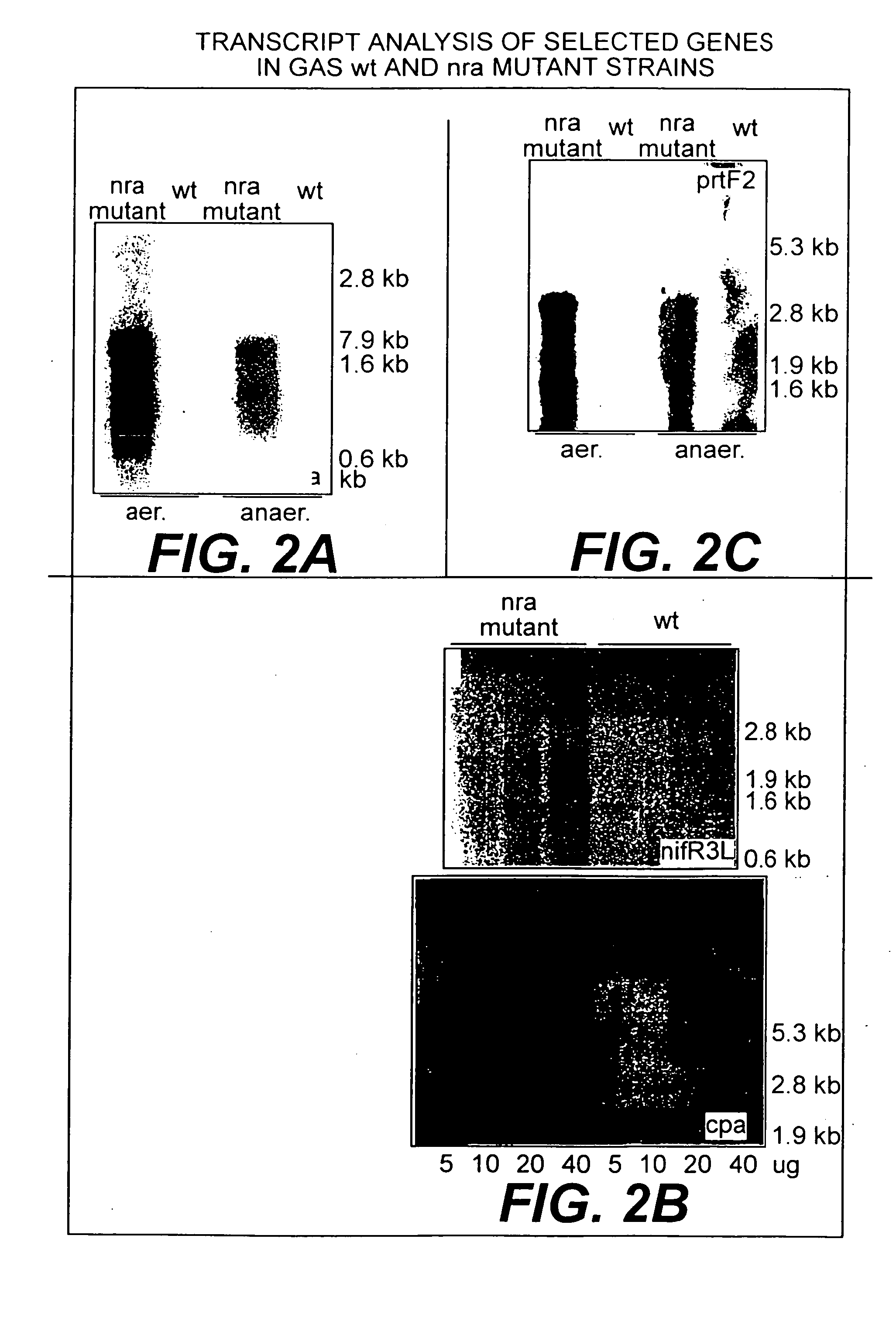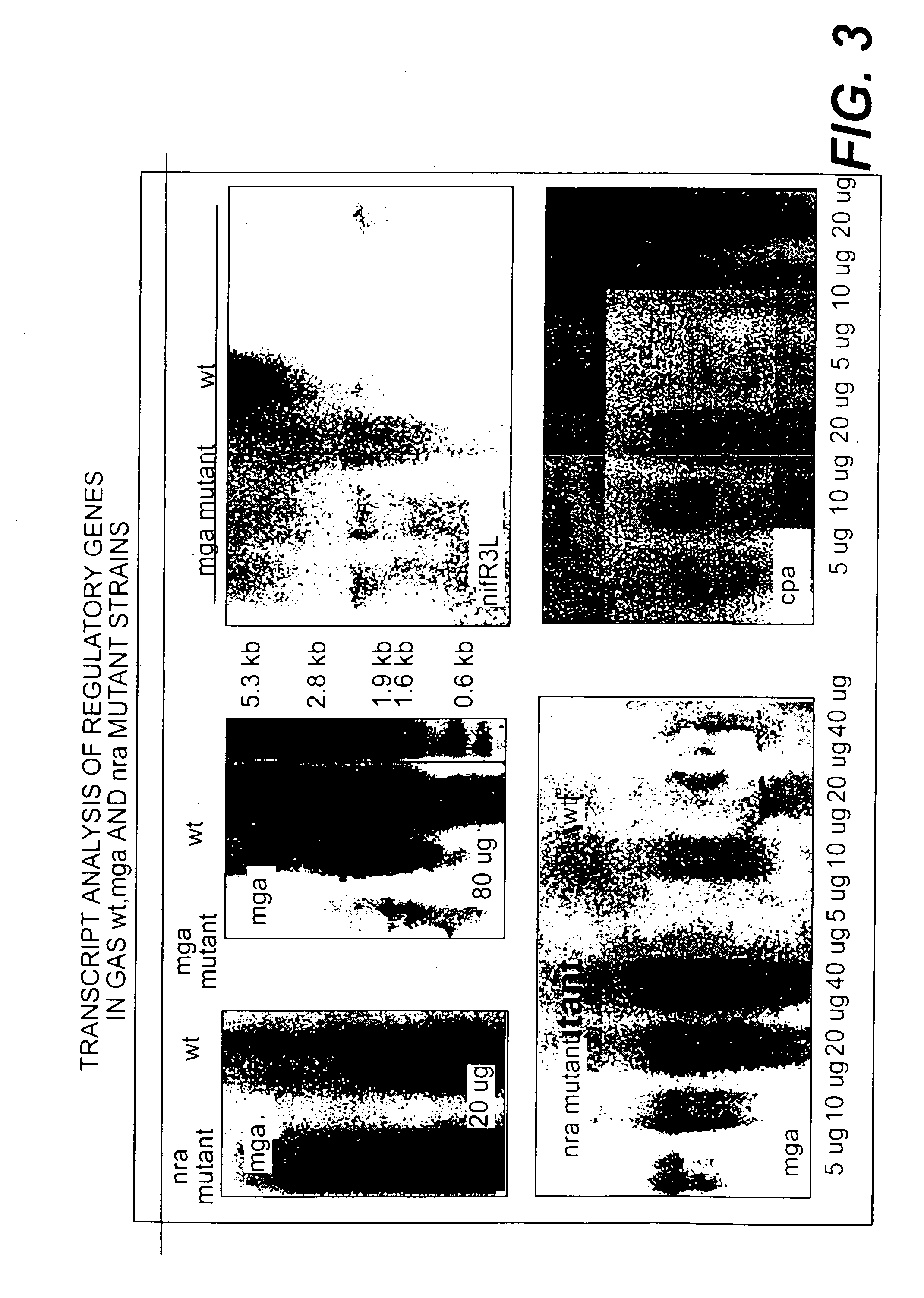Collagen-binding proteins from Streptococcus pyogenes
a technology of collagen-binding proteins and streptococcus pyogenes, which is applied in the direction of bacteria antigen ingredients, antibody ingredients, immunoglobulins, etc., can solve the problem of limited information, the precise role of the bacteria's ability to bind to these extracellular matrix proteins, and the inability to fully determine the role of streptococcal infection, so as to prevent or treat the infection.
- Summary
- Abstract
- Description
- Claims
- Application Information
AI Technical Summary
Benefits of technology
Problems solved by technology
Method used
Image
Examples
example 1
Isolation of Group A Streptococcal Proteins
[0092] A. Bacterial Strains and Culture Conditions
[0093] GAS serotype M49 strain CS101 was provided by P. Cleary, MN, USA Serotypes M1, M2, M3, M4, M5, M6, M12, M18 and M24 GAS strains T1 / 195 / 2, T2 / 44 / RB4.119, B930 / 60 / 2, 75-194, T5B / 126 / 3, S43 / 192 / 1, T12 / 126 / 4, J17C / 55 / 1 and 71-694 were obtained from D. Johnson, MN, USA The M49 GAS isolates B737 / 137 / 1, 49-49 / 123, 88-299, 90-053, 90-397, 89-288, 90-306 and 8314 / 1945 have been described by Kaufhold et al. (1992). E coli strain Blue MRF served as a host for phage Lambda ZAP Express. E. coli stain DH5a was used as host for plasmids pFW11 and pMAL-c2.
[0094]E. coli DH5a isolates transformed with pFW11 or pMAL-c2 derivatives were grown on disk sensitivity testing agar (Unipath) supplemented with 100 mgl{circumflex over ( )}-1 spectinomyccin or 50 mgl−1 ampicillin respectively. E coli Blue MRF strains infected with recombinant lambda phases were grown in NZ casamino acids / yeast extract (NZY) aga...
example 2
Expression of a Recombinant CPA Protein and Determination of its Matrix Protein-Binding Properties
[0121] The entire cpa gene except for its leader peptide encoding portion was amplified by PCR using the primers cpa-pMAL FOR and cpa-pMAL REV (Table 4). The resulting product was cloned into the BamHI and Pst1 sites of plasmid pMAL-c2. Expression in the presence of 2 mM IPTG with an induction period of 4 h and subsequent non-denaturing preparation followed a protocol of Ausubel et al. (1990). Purification of the recombinant CPA-maltose binding fusion protein using a composite amylose / agarose matrix perform according to the instructions of the manufacturer (New England Biolabs). The purified fusion protein was then labeled with peroxidase as described by Schmidt et al. (1993).
[0122] Microtitre plates (96-well, flat-bottom; Nunc) were coated with BSA and human fibronectin, type I collagen or laminin (Gibco BRL) by adding 2 μg of each protein dissolved in 200 μl of 50 mM sodium carbonat...
PUM
| Property | Measurement | Unit |
|---|---|---|
| molecular weight | aaaaa | aaaaa |
| molecular weight | aaaaa | aaaaa |
| temperature | aaaaa | aaaaa |
Abstract
Description
Claims
Application Information
 Login to View More
Login to View More - R&D
- Intellectual Property
- Life Sciences
- Materials
- Tech Scout
- Unparalleled Data Quality
- Higher Quality Content
- 60% Fewer Hallucinations
Browse by: Latest US Patents, China's latest patents, Technical Efficacy Thesaurus, Application Domain, Technology Topic, Popular Technical Reports.
© 2025 PatSnap. All rights reserved.Legal|Privacy policy|Modern Slavery Act Transparency Statement|Sitemap|About US| Contact US: help@patsnap.com



